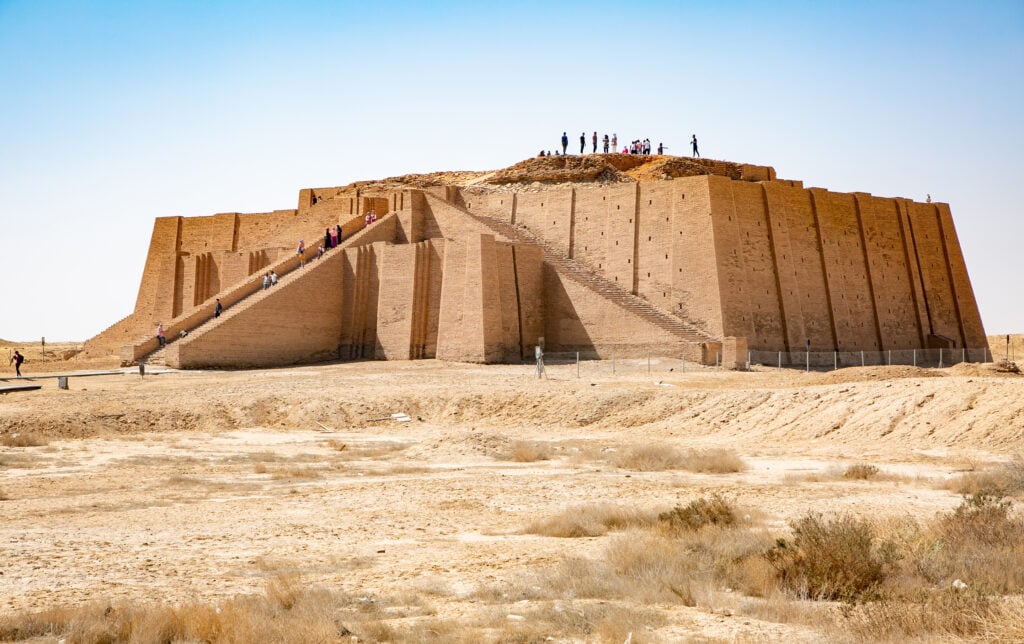For the best part of 5,000 years, the Royal Game of Ur was forgotten. Once a popular game in the ancient Sumerian civilization of Mesopotamia, it faded into obscurity as other games it helped create, games we still play to this day, took its place during the Middle Ages.
But after boards dating back as far as 2,600 B.C. were unearthed in modern-day Iraq, the Royal Game of Ur is now recognized as the oldest tabletop game ever discovered. Working out how to play was rather less simple…

Human civilization in Mesopotamia dates back millennia, with Sumerian culture dating back to between the 5th and 6th millennium B.C. The city of Ur was one of the primary locations for Sumerian society, originally located on the coast of the Persian Gulf, though shifting coastlines mean it has now moved well inland.
Ancient ruins at the site were first recorded by Italian explorer Pietro Della Valle during the Renaissance period, but were not explored thoroughly until the mid 19th century. It was at this time that the Ziggurat of Ur, one of the best-preserved structures from Mesopotamian society, was discovered. Standing nearly 100 feet high, with an area of over 30,000 square feet, the ancient temple and city were further excavated in the 1920s and 1930s under the stewardship of British archaeologist Sir Leonard Woolley.
The Royal Game of Ur was not the most famous of Woolley’s discoveries at the site. Leading a joint expedition between the British Museum and the University of Pennsylvania, Woolley’s work began in 1922 and he soon found that Ur was the location for the burial of a number of Sumerian royals, including Queen Pu-Abi.

These royal tombs were preserved and unlooted, and the artifacts remain the most prominent of Woolley’s discoveries at Ur, but in 1928 he found something else: an ancient board game. His team unearthed five boards, intricately decorated, made of wood, inlaid shell and lapis lazuli. It was clear that this was a recreational game, providing a valuable glimpse into Sumerian social life, yet there was an issue: nobody knew how to play it.
That was, until, the 1980s when a man named Irving Finkel came along. A curator and Assyriologist at the British Museum, Finkel realized that a clay tablet dating to the second century B.C. and written by the scribe Itti-Marduk-balāṭu in cuneiform script was in fact a set of rules to the Royal Game of Ur. The period was first discovered around 1880 in the ruins of Babylon.
The British Museum bought the relic shortly afterward. Scholars attempted to deduce its meaning, but Finkel was able to identify it as the instructions on how to the ancient board game after comparing it to the boards and translating the script.

“The tablet included a grid on one side, and two columns of closely written text on the other,” Finkel wrote in a paper on the game.” He recognized that the game was effectively a race between the two players to get their pieces off the board. Progress is made by the rolling of a pyramid-shaped dice, determining how many places you can move forward. It is up to the player to decide which of their pieces to advance, as you can also land on the opposition’s tile, pushing them back to the very beginning.
The tablet also revealed that the Royal Game of Ur held a wider meaning: the squares a player landed on were said to predict their fortune. Certain squares on the board were assigned signs of the zodiac, and they came with predictions around food, drink, friendships, power and wealth.

Since Woolley’s initial rediscovery, other copies of the game have been found around the world. Backgammon likely evolved from it, while the game Aasha, played by Jewish people in Kochi, India, is a variation of the Royal Game of Ur, as they migrated from ancient Babylonia.
There are now efforts to reintegrate the Royal Game of Ur into modern societies. It is free to play online, against a computer or against other players online, and new boards are being designed and made based on models of the original boards.
Read More: How a new dam saved the island of Mont-Saint-Michel
If you fancy a Royal Game of Ur, you can play it here.
Hoshmand Mofaq is a local artist who designed prototypes of new boards. “It is a nice feeling when you rebuild and recreate a game which is not played by people anymore,” Mr. Mofaq said in a 2018 interview with The Arab Weekly. “And you try to show your generation and your people what we used to have before.”





